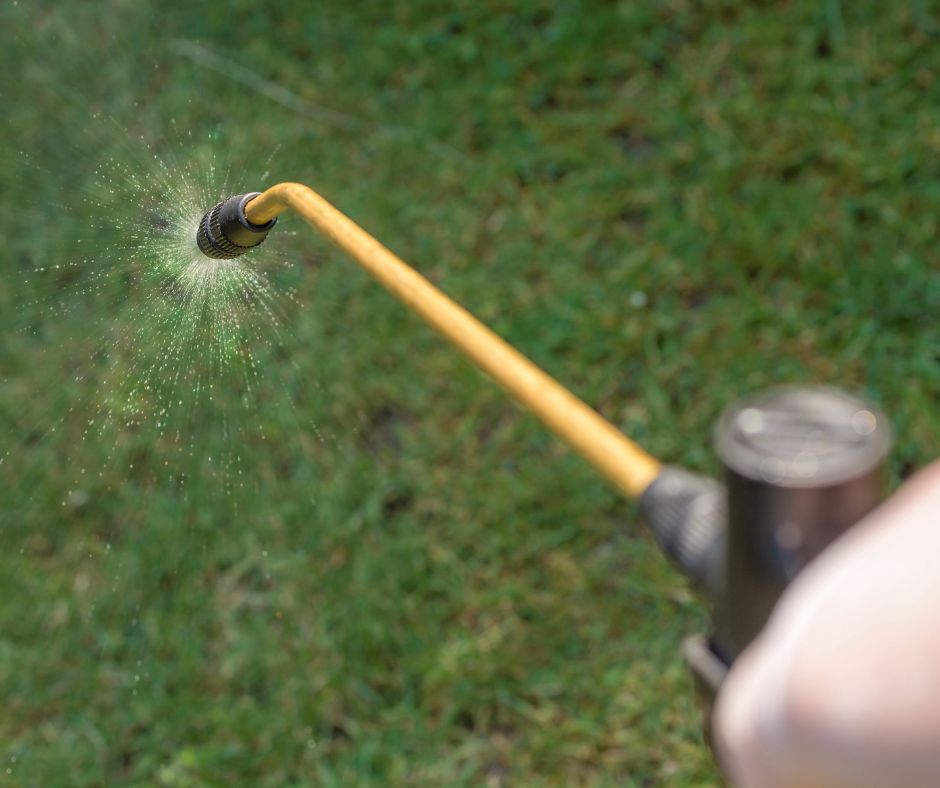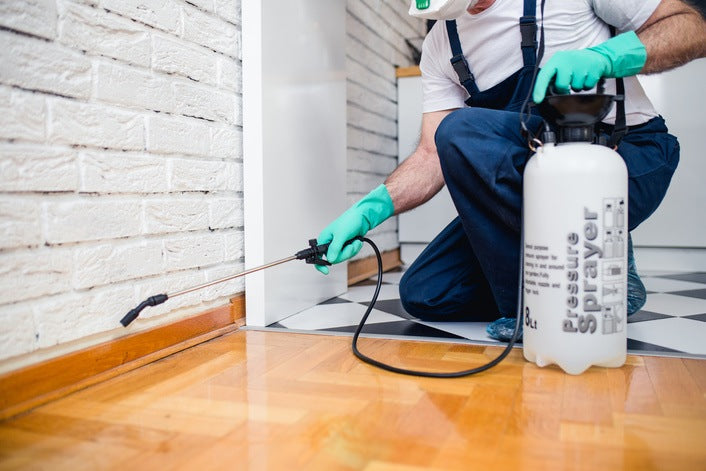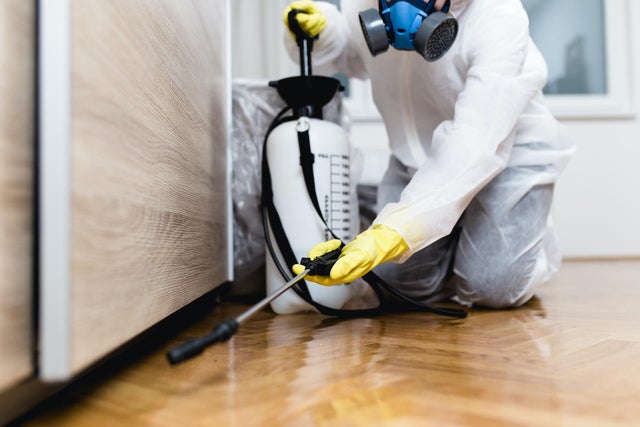Efficient and Swift Bed Bug Exterminator Port Charlotte Services for Peace of Mind
Learn More About the current Advancements in Insect Control and Just How to Apply Efficient Treatment Solutions
In recent years, the area of pest control has seen considerable advancements, driven by the requirement for efficient and sustainable treatment services. Innovative approaches such as Integrated Parasite Management (IPM) combine environmentally friendly methods with cutting-edge modern technology, boosting both effectiveness and environmental responsibility.
Eco-Friendly Bug Control Options
Over the last few years, the need for environment-friendly pest control options has actually risen as companies and home owners alike look for sustainable choices to typical chemical treatments. This shift is driven by expanding environmental recognition and a need to minimize the wellness risks connected with artificial pesticides.

Green pest control methods encompass a variety of techniques that prioritize making use of all-natural materials and practices. Integrated Parasite Management (IPM) is one such strategy, incorporating organic, social, and mechanical strategies to manage insect populations while minimizing dependence on chemicals (Wildlife removal services). This holistic method highlights avoidance through environment control and the intro of all-natural predators, thus fostering a well balanced community
One more prominent option is the use of botanical chemicals derived from plants, which have a tendency to be much less dangerous to non-target microorganisms. Products like neem oil and diatomaceous earth have gotten traction for their effectiveness in regulating pests while positioning very little risks to human health and the environment.
Furthermore, exemption strategies, such as sealing entry factors and preserving cleanliness, play a critical role in environmentally friendly bug monitoring. By embracing these sustainable methods, individuals and companies can successfully manage bugs while promoting a healthier planet for future generations.
Smart Innovation in Insect Administration
Innovation is improving the landscape of bug administration, with smart technology arising as a crucial force in enhancing effectiveness and efficiency - Wildlife removal services. The assimilation of Net of Things (IoT) gadgets, expert system (AI), and information analytics is revolutionizing exactly how bug control professionals come close to infestations
Smart catches equipped with sensing units can find parasite task in real-time, sending instant alerts to drivers. This permits timely reactions, reducing damages and lowering the requirement for considerable therapies. Additionally, AI formulas examine historical data to forecast bug habits, enabling proactive treatments based upon environmental problems and invasion patterns.
Drones and automated vehicles are likewise playing a considerable duty in pest management, giving aerial analyses of large areas, determining hotspots, and also distributing targeted therapies. These innovations not only enhance operations but additionally improve safety and security by restricting human exposure to possibly hazardous chemicals.
Furthermore, mobile applications encourage consumers to check insect task and gain access to expert suggestions, fostering a joint technique to pest management. Overall, the fostering of clever innovation is establishing a new requirement in pest control, highlighting data-driven choices and sustainable methods that inevitably profit both experts and home owners alike.
Integrated Parasite Management Strategies
Integrated Bug Monitoring (IPM) employs an alternative technique to pest control, incorporating different methods to properly manage pest populations while lessening threats to human health and the atmosphere. IPM focuses on recognizing the pest life process, their natural enemies, and the ecosystem in which they prosper.
Among the basic parts of IPM is checking pest populaces via normal evaluations and data collection. This allows for the identification of insect limits, determining when treatment is needed. Cultural methods, such as crop sanitation, environment, and turning control, are important visit here in minimizing bug occurrence and promoting plant health and wellness.
Mechanical controls, consisting of barriers and catches, are additionally crucial in IPM. These methods can physically get rid of or prevent pests without using chemicals. When needed, the cautious application of chemical controls is used, focusing on targeted treatments that reduce ecological influence.
Education and learning and collaboration among stakeholders, including farmers, parasite control professionals, and the community, are critical for the successful application of IPM strategies. By prioritizing sustainable techniques, IPM not just addresses pest problems however likewise promotes a healthier ecosystem.
Biological Control Approaches
Various organic control techniques are increasingly identified for their efficiency in taking care of insect populaces while promoting eco-friendly balance. These approaches harness natural killers, parasites, and pathogens to lower pest numbers without counting on artificial chemicals. For example, the intro of ladybugs can effectively regulate aphid populations, while nematodes target soil-dwelling pest larvae.
Furthermore, using microbial pesticides, such as Bacillus thuringiensis (Bt), offers an eco friendly alternative for taking care of caterpillar insects. These items especially target pest species, lessening injury to helpful bugs and pollinators. Furthermore, conservation biological control highlights improving environments for natural enemies, such as birds and useful pests, thereby urging their visibility in farming systems.
Study proceeds to reveal ingenious methods within this field, such as making use of scents to disrupt pest breeding patterns or the advancement of biocontrol representatives via genetic modification. Executing these approaches can lead to lasting parasite monitoring practices that minimize the dependence on chemical interventions, ultimately fostering much healthier ecosystems. As understanding of these methods expands, they are ending up being integral components of integrated insect management (IPM) strategies, using a balance between efficient bug control and environmental stewardship.
DIY Bug Control Solutions
As homeowners seek reliable means to tackle pest problems, do it yourself insect control solutions have obtained appeal for their availability and cost-effectiveness. These approaches equip people to resolve invasions utilizing conveniently offered products and techniques, frequently without the requirement for expert intervention.

Additionally, maintaining appropriate cleanliness and routine evaluations can avoid bug access and nesting (Wildlife removal services). Easy techniques, such as sealing cracks, removing food resources, and decluttering, can dramatically decrease insect populations. Traps, both homemade and commercially available, can likewise use efficient solutions for monitoring and managing specific bugs like insects or rodents

Conclusion
The combination of environmentally friendly bug control alternatives, clever modern technology, and ingenious read this management techniques presents a thorough technique to reliable pest administration. By embracing Integrated Parasite Monitoring (IPM) and using organic pest prevention control approaches, along with Do it yourself solutions, sustainable and accountable insect control can be attained.
Eco-friendly bug control approaches include a variety of methods that focus on the use of all-natural compounds and methods. Integrated Bug Monitoring (IPM) is one such approach, integrating biological, social, and mechanical tactics to manage parasite populations while decreasing dependence on chemicals. As recognition of these strategies grows, they are coming to be integral components of integrated parasite monitoring (IPM) strategies, offering an equilibrium between reliable pest control and ecological stewardship.
The assimilation of environmentally friendly parasite control alternatives, wise innovation, and innovative management approaches presents a detailed technique to reliable insect administration. By embracing Integrated Parasite Administration (IPM) and making use of biological control methods, alongside DIY remedies, sustainable and accountable insect control can be accomplished.